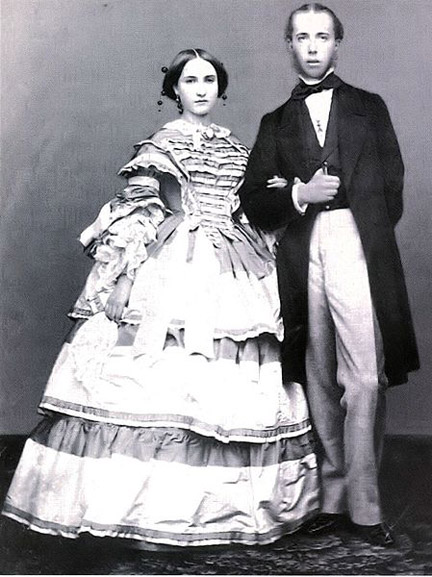Shooting Stars
8" Version
The tenth block recalls the Bombardment of Fort Hudson, to which Sarah, her sisters and friends had a ringside seat.
Confederate Battery on a bluff over the Mississippi
Shooting Stars
A 12" version
with a 1" frame, set on point
By Sandi Brothers
In the spring of 1863 the Union Navy tried to pass a Confederate
battery dug in at Port Hudson on the Mississippi River. The Confederate troops held, despite a terrific cannon
battle heard by Sarah Morgan and the women living at nearby Linwood.
The orange sunburst is the site of the Battle of Port Hudson.
The white square is Linwood Plantation
March 14, 1863, Linwood, East Feliciana Parish
"They are coming! The Yankees are coming at last! For four or
five hours the sound of their cannon has assailed our ears. There! - that one
shook my bed! Oh, they are coming! God grant us the victory! They are now
within four miles of us, on the big road to Baton Rouge. …
[Sarah is mistaken here---what she was hearing was Confederate cannon firing at the Union ships, and some answering fire from the ships.]
Currier & Ives print
Admiral David Farragut led a fleet of 7 Union Ships
past the batteries on shore. Only two made it past the Confederates.
The battle was not a real victory for either side
but many prints glorified the Union Navy.
"It has come at last!
What an awful sound! I thought I had heard a bombardment before; but Baton
Rouge was child's play compared to this. ….We have all been in Mrs. Carter's
room, from the last window of which we can see the incessant flash of the guns
and the great shooting stars of flame, which must be the hot shot of the enemy.
There is a burning house in the distance,
the second one we have seen to-night....Gathered in a knot within and without the window,
we six women up here watched in the faint starlight the flashes from the guns,
and silently wondered which of our friends were lying stiff and dead….
March 15
To my unspeakable surprise, I waked up this morning and found
myself alive."
The Battle of Port Hudson
from Frank Leslie's Weekly
Cutting a 12" Block
A Cut a light square and a dark square 7 1/4" (7-3/16" if you use the 1/16th default). Cut each into 4 triangles with 2 cuts. You will only need 2
of each shade.
B Cut 2 light and 2 dark rectangles 13-1/4" (13-3/16" if you use the 1/16th default) x 3 1/2". Trim a 45 degree angle off the
end of each. You can do this before you piece, but it might be easier to trim to a triangle after piecing.
Cutting an 8" Block
A Cut a light square and a dark square 5 1/4" (5-3/16" if you use the 1/16th default). Cut each into 4 triangles with 2 cuts. You will only need 2 of each shade.
B Cut 2 light and 2 dark rectangles 9-1/4" (9-3/16" if you use the 1/16th default) x 2 1/2". Trim a 45 degree angle off the end of each. You can do this before you piece, but it might be easier to trim to a triangle after piecing.
Optional applique:
Applique a star after piecing. (I don't know why I put a heart!!!!)
Go back to the January 5, 2013 post to see a JPG with the heart
and the star.







































